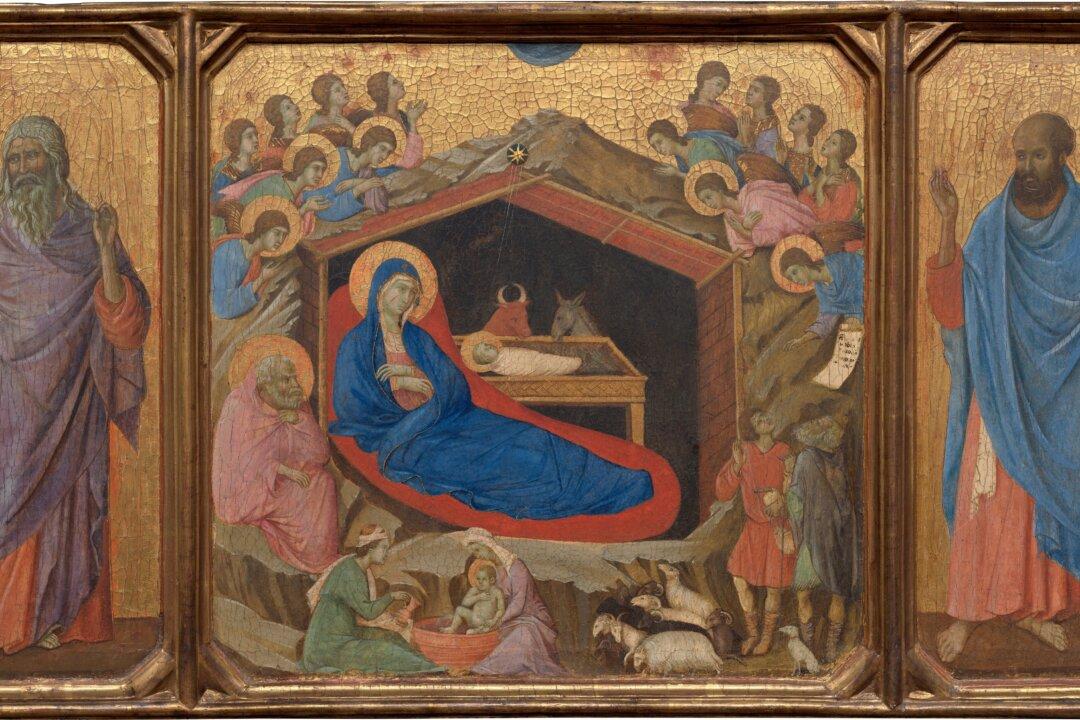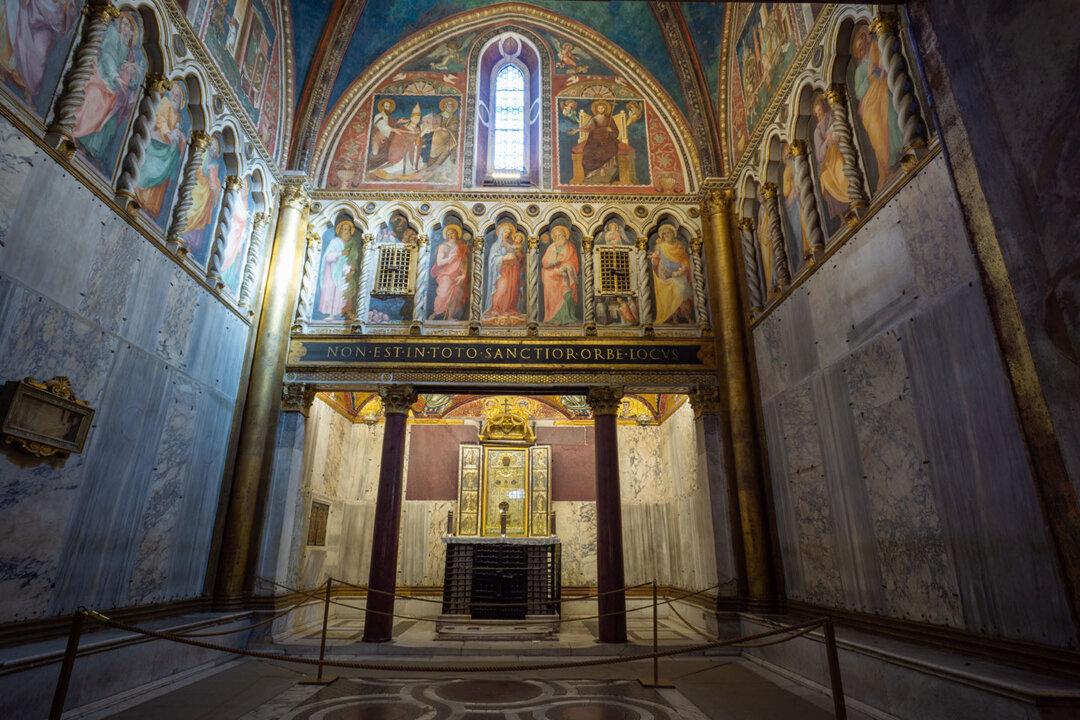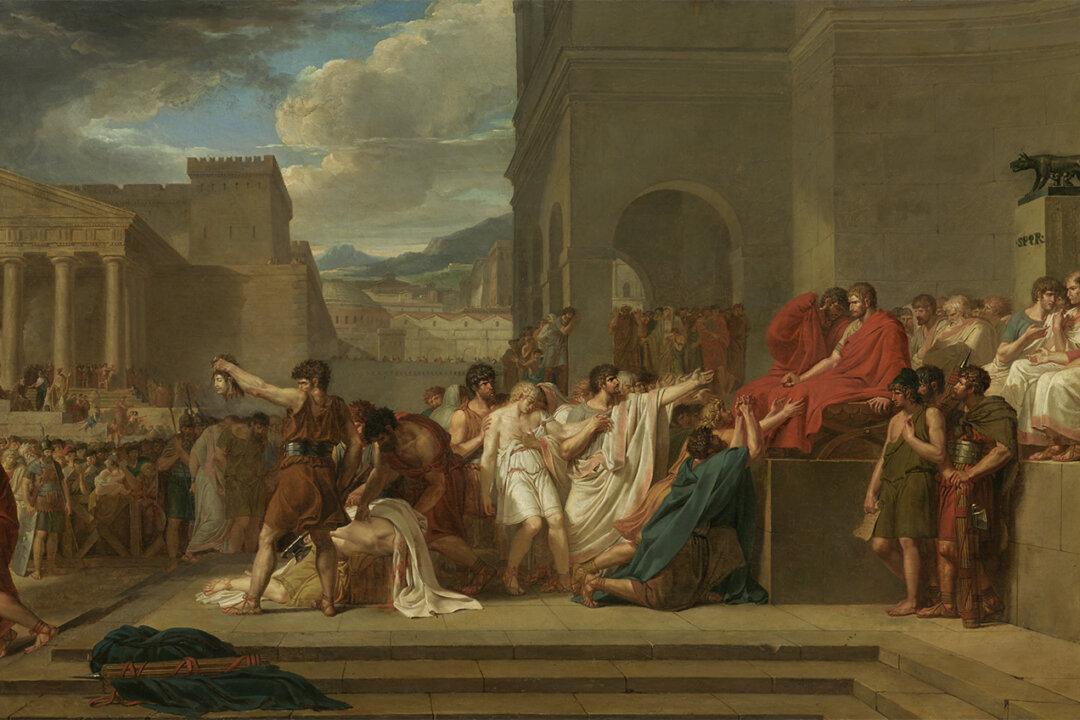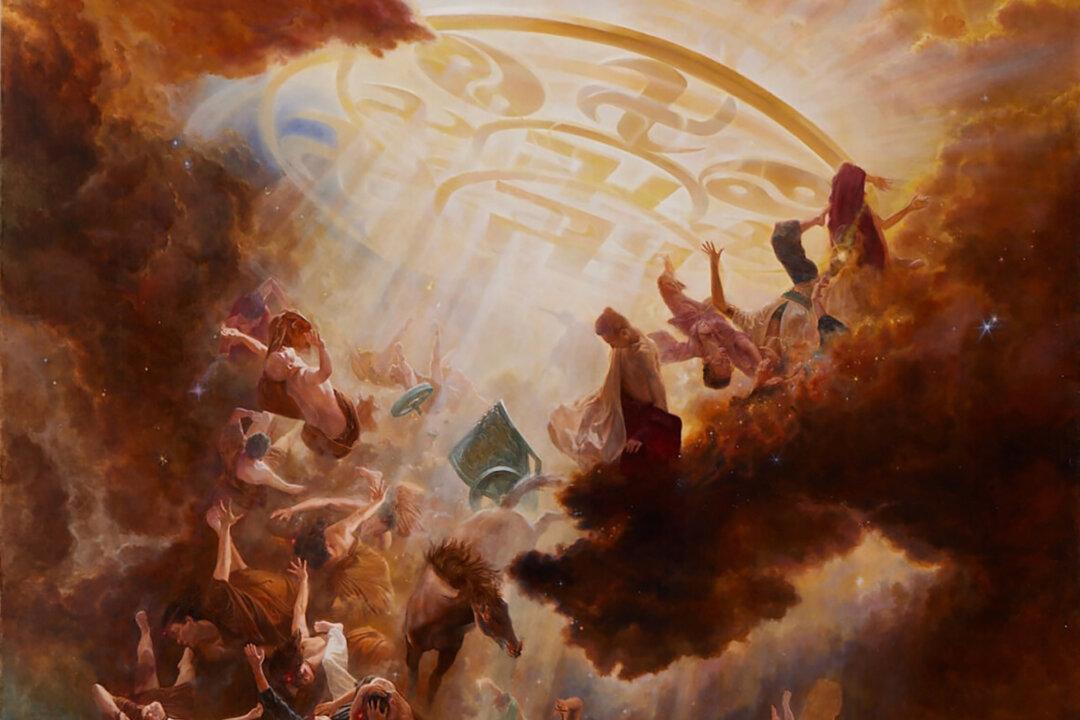Around the year 1500, the northern Italian artist Andrea Mantegna painted a scene of the “Adoration of the Magi.” This was a deeply familiar theme to every Christian in Renaissance Europe. Upon the birth of Christ, three wise men from the East came guided by a star to worship him, bringing the precious gifts of gold, frankincense, and myrrh.
Working probably for a private patron, the artist places the scene in an intimate setting, portraying the figures in half-length format in a compact space. On the left, Mary and Joseph present the Christ child, who holds up a gesture of blessing; on the right, the three Magi hold up their offerings, facing the Holy Family with vivid expressions of awe, austerity, and joy.





